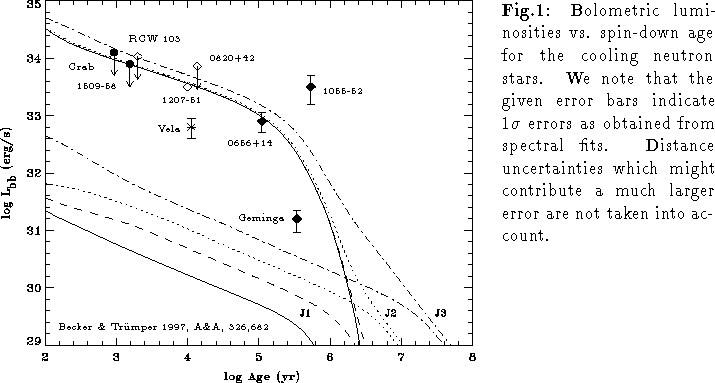ROSAT Observations of Cooling Neutron Stars
Making use of the good spatial resolution of the ROSAT High Resolution Imager we have observed the Crab-pulsar emission (Becker & Aschenbach 1995) and PSR 1509-58 in MSH 15-52 (Becker & Trümper 1997), which are both surrounded by strong synchrotron nebulae. In both cases the pulsar radiation is dominated by magnetospheric emission. The DC component was used to derive upper limits for the photospheric emission (cf. Fig.1).
Four pulsars (Vela, PSR 0656+14, Geminga and PSR 1055-52) show a two
component behaviour of their X-ray emission: a hard power-law component
which can be attributed to magnetospheric emission and a soft phase shifted
component which is interpreted as photospheric emission. The corresponding
bolometric,photospheric luminosities ![]() are shown in Figure 1.
are shown in Figure 1.
In the supernova remnants RCW 103, Puppis A and PKS 1207-51 point sources
have been found showing luminosities and temperatures compatible with cooling
neutron stars. For comparison, the cooling curves for standard and accelerated
neutron star cooling (FP-Model) including frictional heating (J1-J3) are shown
(Umeda et al. 1993).
The figure demonstrates that the thermal emission from the observed objects
is largely consistent with the prediction of standard cooling for a neutron
star with a medium stiff equation of state.
Becker,W., Aschenbach, B., in The Lives of Neutron Stars,
eds. Alpar, Kiziuglu & van Paradijse, 1995.
Becker,W., Trümper, J., A&A, 1997, 326, 682-691
Umeda, H., et al., ApJ, 1993, 408, 286.
